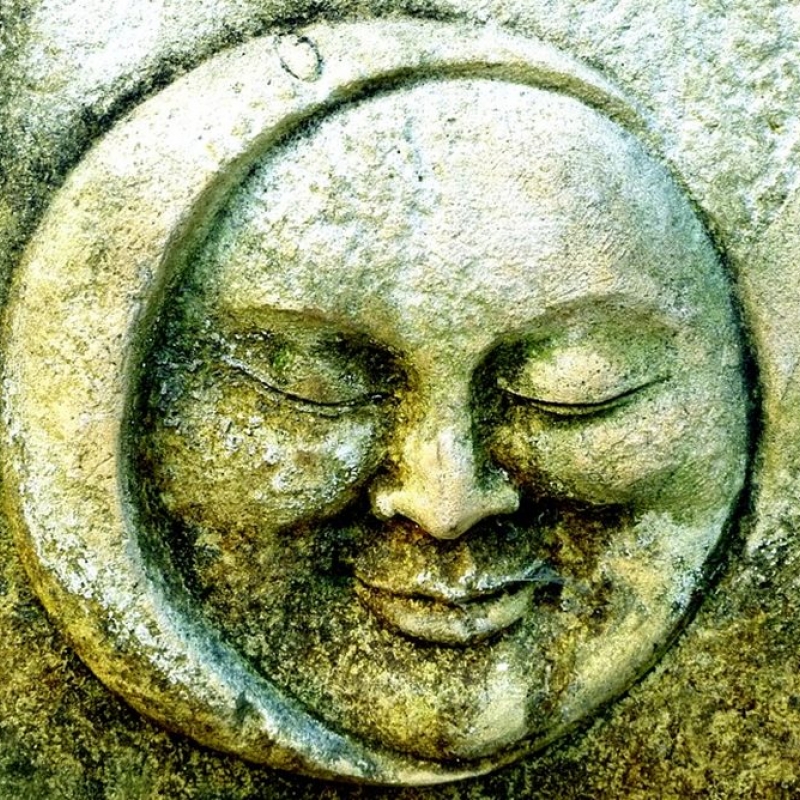‘Creation myths’, basically stories and lore that explain how the world and life began, are universal, and diverge across states, countries, indigenous communities, and even religions such as Hinduism, Christianity, Judaism, and Islam. In fact, to paraphrase Levi-Strauss, we may not even realise the impact they have on our minds without our being aware of it. Sahapedia explores the significance of creation myths in tradition (Photo Source: Pixabay)
In the Rig Veda, there is a passage, ‘If in the beginning there was neither Being nor Non-Being, neither air nor sky, what was there? Who or what oversaw it? What was it when there was no darkness, light, life or death? We can only say that there was the One, that which breathed of itself deep in the void, that which was heat and became desire and the germ of spirit’ (X:129). Such speculative reflections on the beginning of the universe, life, and consciousness are essences of creation myths around the world. Creation myths are as universal as our need to know where we came from, how things originated and they cater to our need to locate ourselves in cultural identity and significance. The historian of religion Mircea Eliade calls creation myth, ‘the narration of sacred history’, the storytelling process by which chaos becomes cosmos.
The splitting of the ‘Golden Egg’
The Hiranyagarbha (literal translation, ‘golden egg’) Sukta of the Rig Veda (X:121) declares that Brahman, the Soul of the Universe, manifested as a golden egg encompassing everything and floating around in emptiness and darkness before splitting into two halves, Svarga (paradise) and Prithvi (earth). The exciting aspect of the Hiranyagarbha Sukta and the Upanishad is that the creation myth is carried on to other mythologies such as Bhagavata Purana and the Ithihasas (epics) such as Ramayana and Mahabharata. Hiranyagarbha is also a sacrificial ritual (yagna) in Vedic religion. We see continuities of the creation myth of Hiranyagarbha in the conceptions of Brahman, developed by Vedanta and Samkhya—two important schools of Indian philosophy.
An imaginary presented in the ‘creation myth’-impelling religious rituals and theological thinking is not unique to Hinduism. The notion that creation myths have an overarching effect on many strands of thought is common to Hinduism, Christianity, Judaism, and Islam. Likewise, creation myths are also central to the histories of indigenous communities around the world. Understood as the symbolic narrative of the beginning of the world in a particular tradition or a community, creation myths are of great significance for the orientation of humans in the universe and the basic patterns of life and culture. Fascinated by the seminal importance that creation myths play in the religious life of communities, historians of religion and anthropologists have identified several common motifs that structure the narratives of the myths. Claude Levi-Strauss famously wrote, ‘I, therefore, claim to show not how men think in myths, but how myths operate in men’s minds without their being aware of the fact.’ Like language and music, myth is a form of human reason that has an internal cultural logic. Deciphering that logic, Mircea Eliade observed that by knowing the myth one knows the origin of things and, hence, can control and manipulate them at will; this is not an external or abstract knowledge but an experiential knowledge acquired by ceremonially recounting the myth.
The myth of Donyi-Polo in Arunachal Pradesh
Creation myths can help revive traditions and identities, and one of the great examples of such revival is the Donyi-Poloism of Arunachal Pradesh (read more here). The name ‘Donyi-Polo’ means ‘Sun-Moon’, a name chosen by the people in the 1970s when its restoration started. Practised prominently among Tani, Adi, Karbi, and Galo tribes of Arunachal Pradesh, Donyi-Poloism is categorised as an animistic and shamanistic religion. In one of the versions of the Donyi-Polo creation myth, all things and beings are parts of the body of Sedi—the hair of Sedi becomes the plants of the earth, his tears become rain and water, his bones become rocks, and his eyes become Donyi (Mother Sun) and Polo (Father Moon). After physical manifestation, Sedi continues to watch and guard over the universe, revealing and hiding himself to the truth seekers.
Donyi and Polo are the female and male divine principles and energies providing harmony, shifts of light and darkness, the unity of sky and earth, and multiplicity of stars. In religious contexts, the Donyi-Polo is referred to as the truth with a capital T. The practitioners believe that the Donyi-Poloism is an embodiment of truthfulness, selflessness, and wisdom. As a highly evolved ethical system, the Donyi-Poloism values purity, beauty, simplicity and honesty. In 2017, author Oi Komi (Ragyor) released a prayer book titled, Donyi-Polo: Ayang Long Yika, a first of its kind for the Boh, Ramo and Boko communities of the Adi tribe. Talom Rukbo, the father of the modern Donyi-Polo movement, is a venerated figure in Arunachal Pradesh. On October 6, 2018, in Pasighat, the Governor of Arunachal Pradesh unveiled a 20 ft-tall statue of ‘Golgi Bote’ Talom Rukbo, the ‘guru’ of indigenous faith believers of the state.
‘Enlighten your mind as the sunshine, soften your mind as the moonlight’ is a popular chant among the followers of the Donyi-Poloism. It is a ‘Lead, Kindly Light’ slogan for anyone who wants to explore the universe of creation myths too.
Views expressed are personal. This piece was also published on IndianExpress.com
MORE ON MYTHS AND LEGENDS ON SAHAPEDIA
Myths and Legends of the Angami Nagas of Khonoma
Some Legends and Folk Stories of the Baiga People of Central India
The Dimasa Kacharis of Cachar District: An Overview
Kodagu and its People, Myths and Martial Traditions
Story of the Origins (conversation with Rabari Jesang Bhai Hadu Bhai Bhaar, Kutch)
Of Faith and Myth: History at a Shrine at the Border
The Relation between Pan-Indian, Regional and Oral Epics












